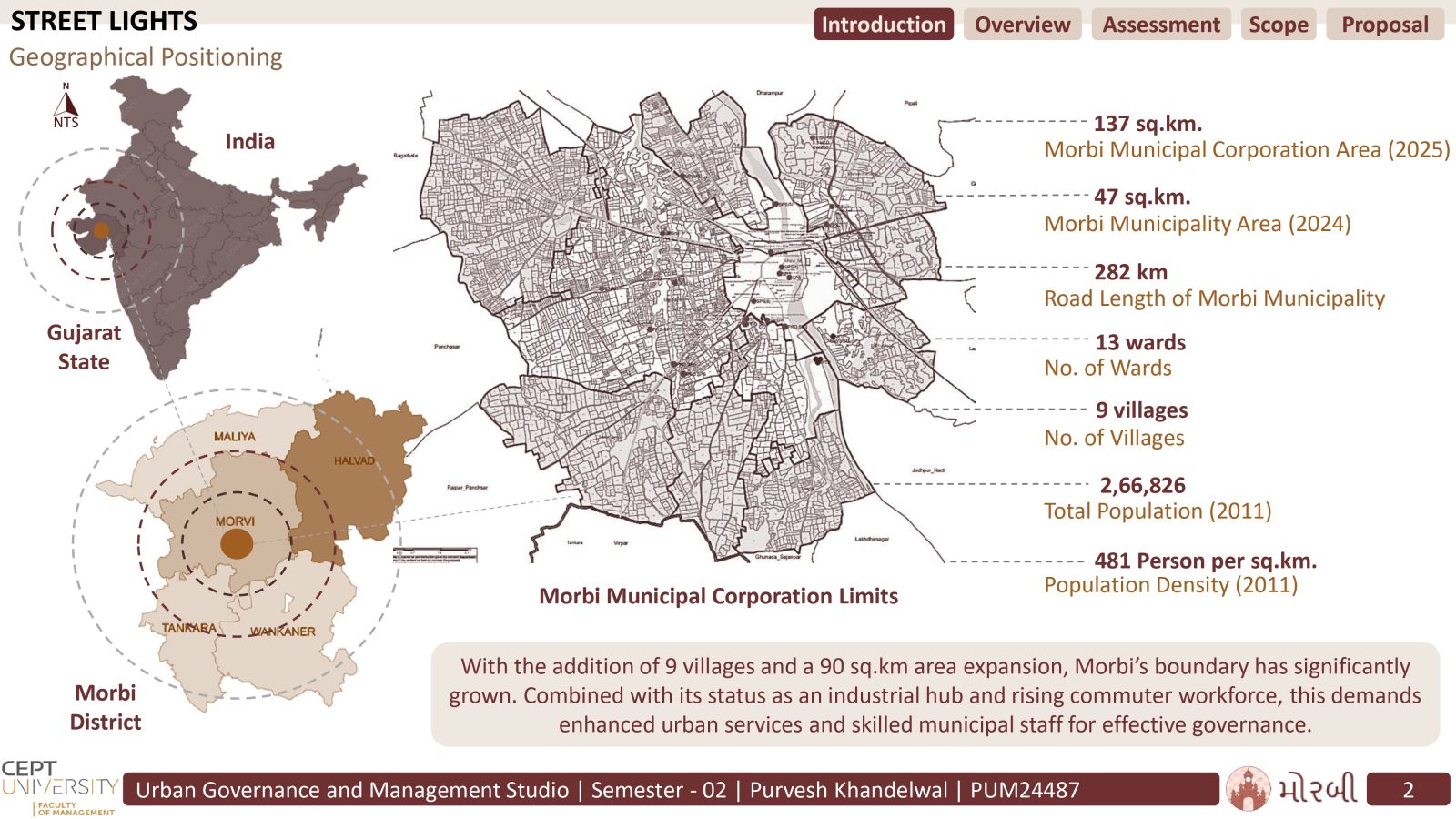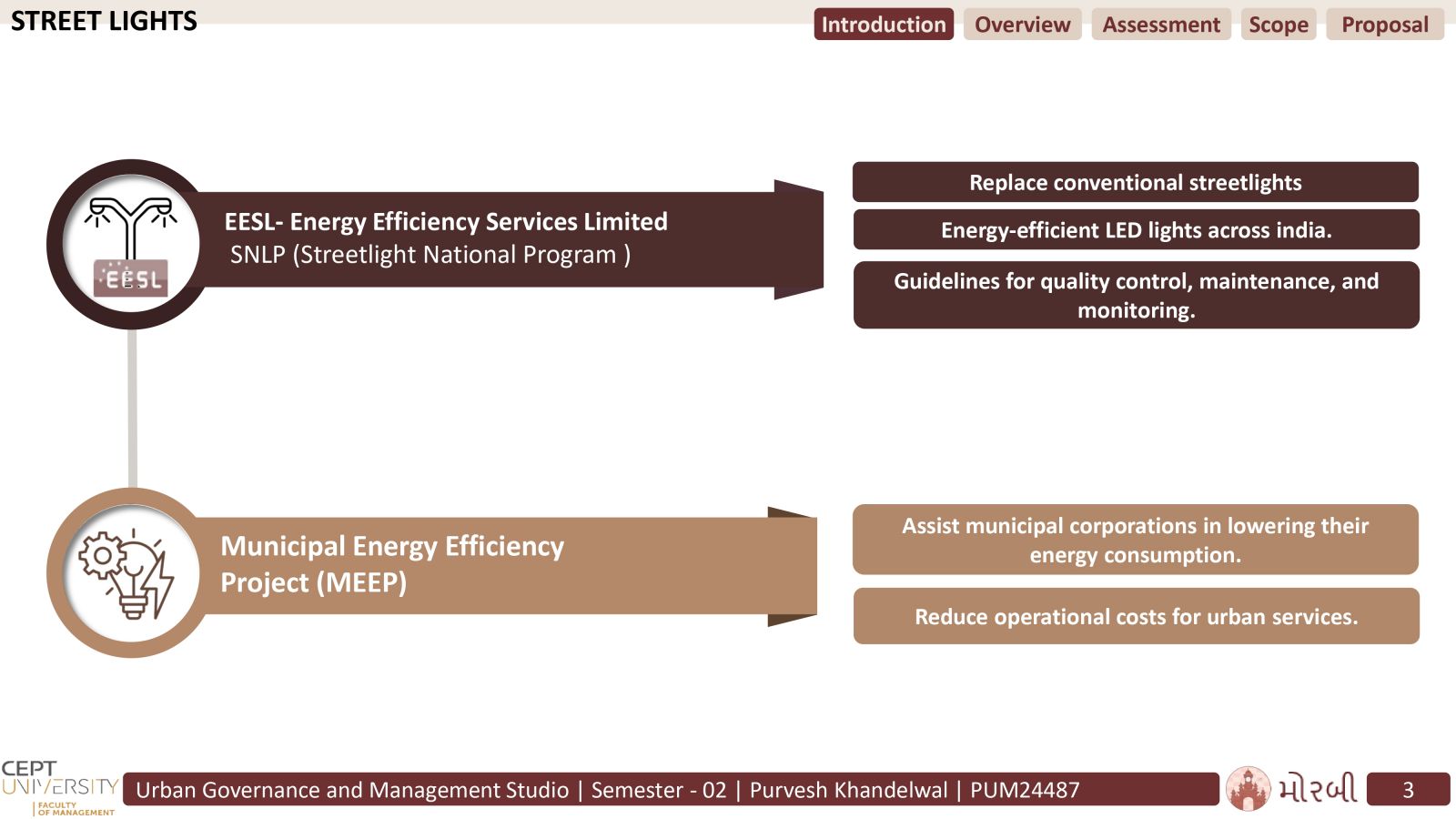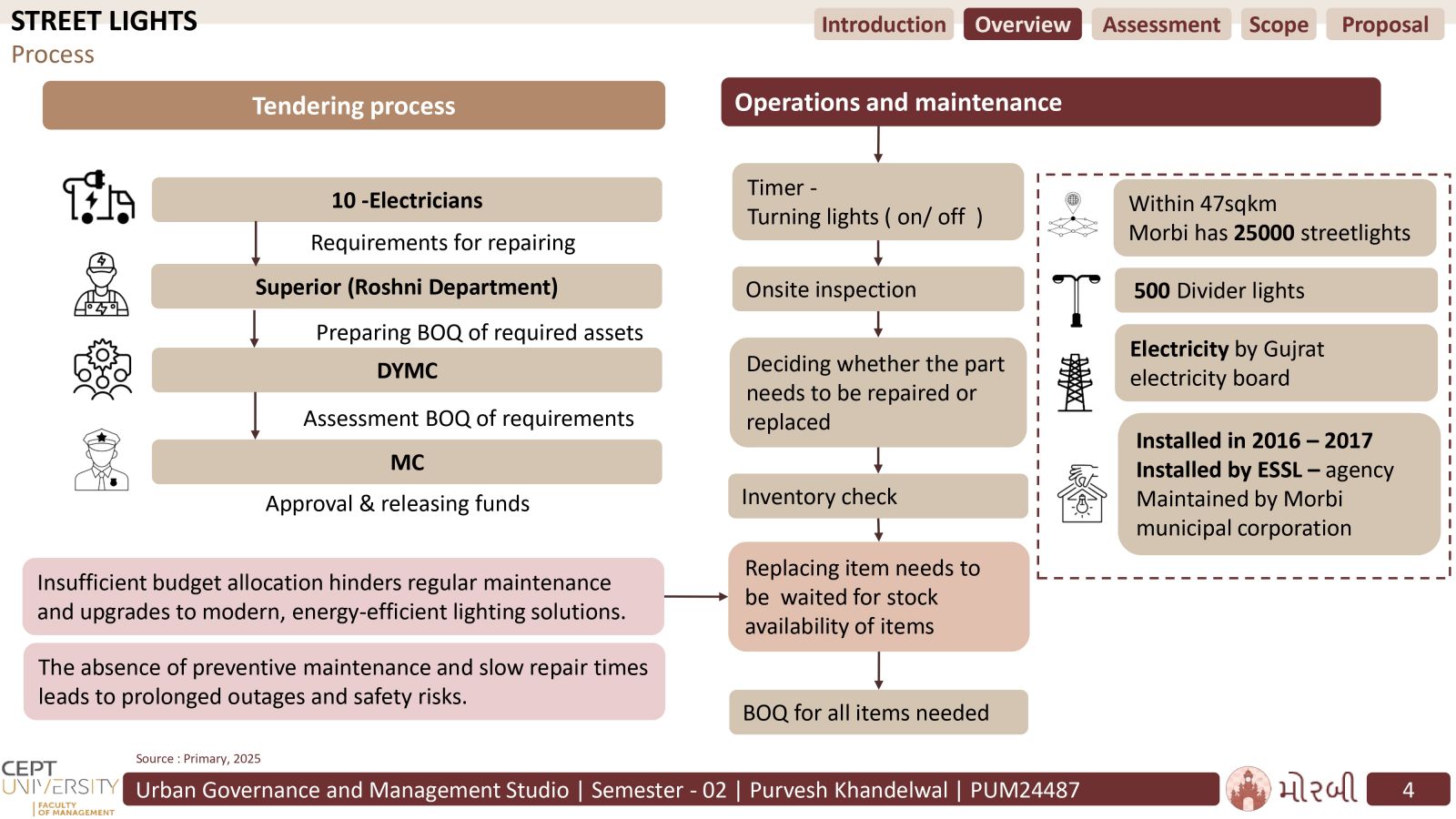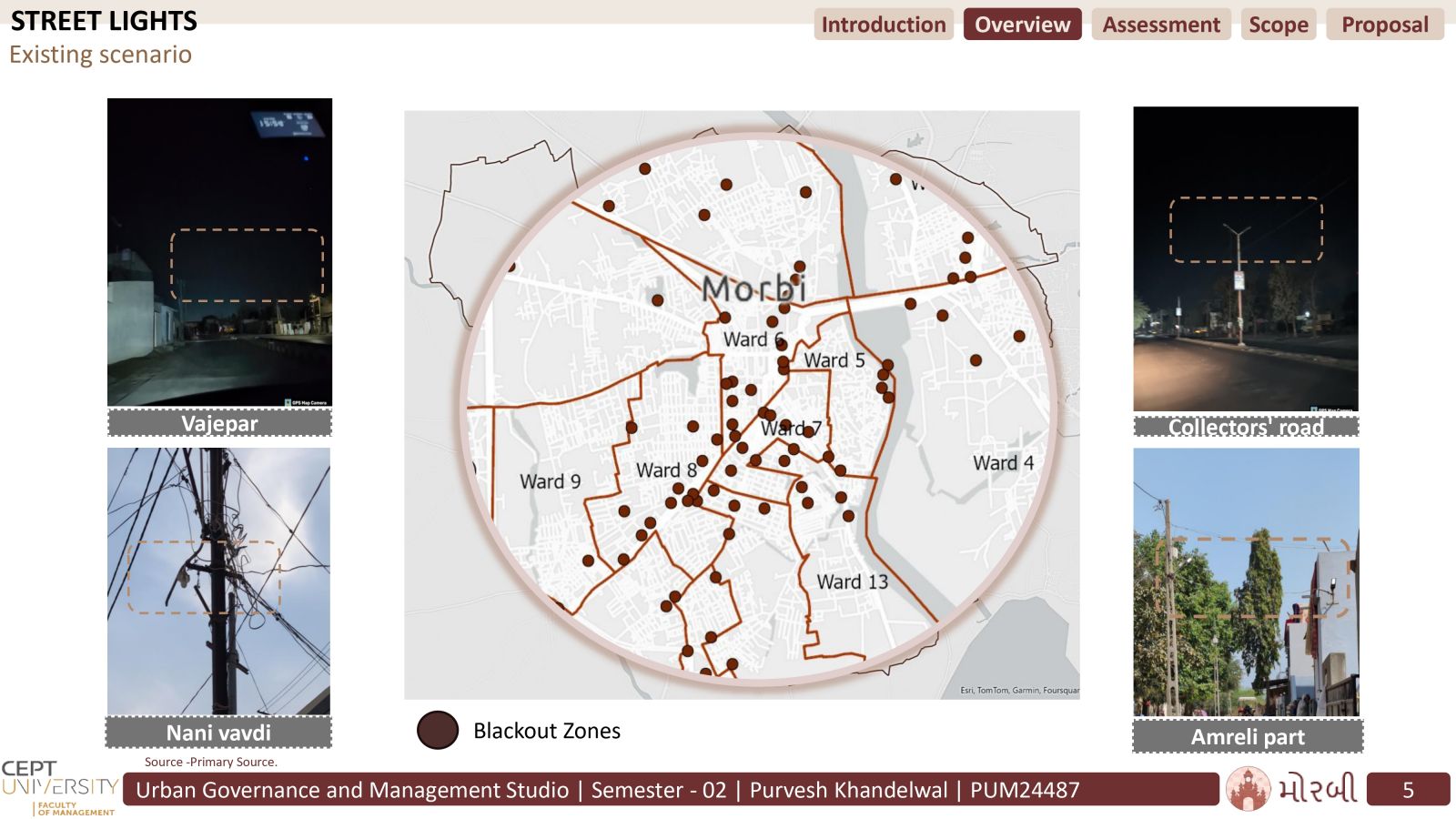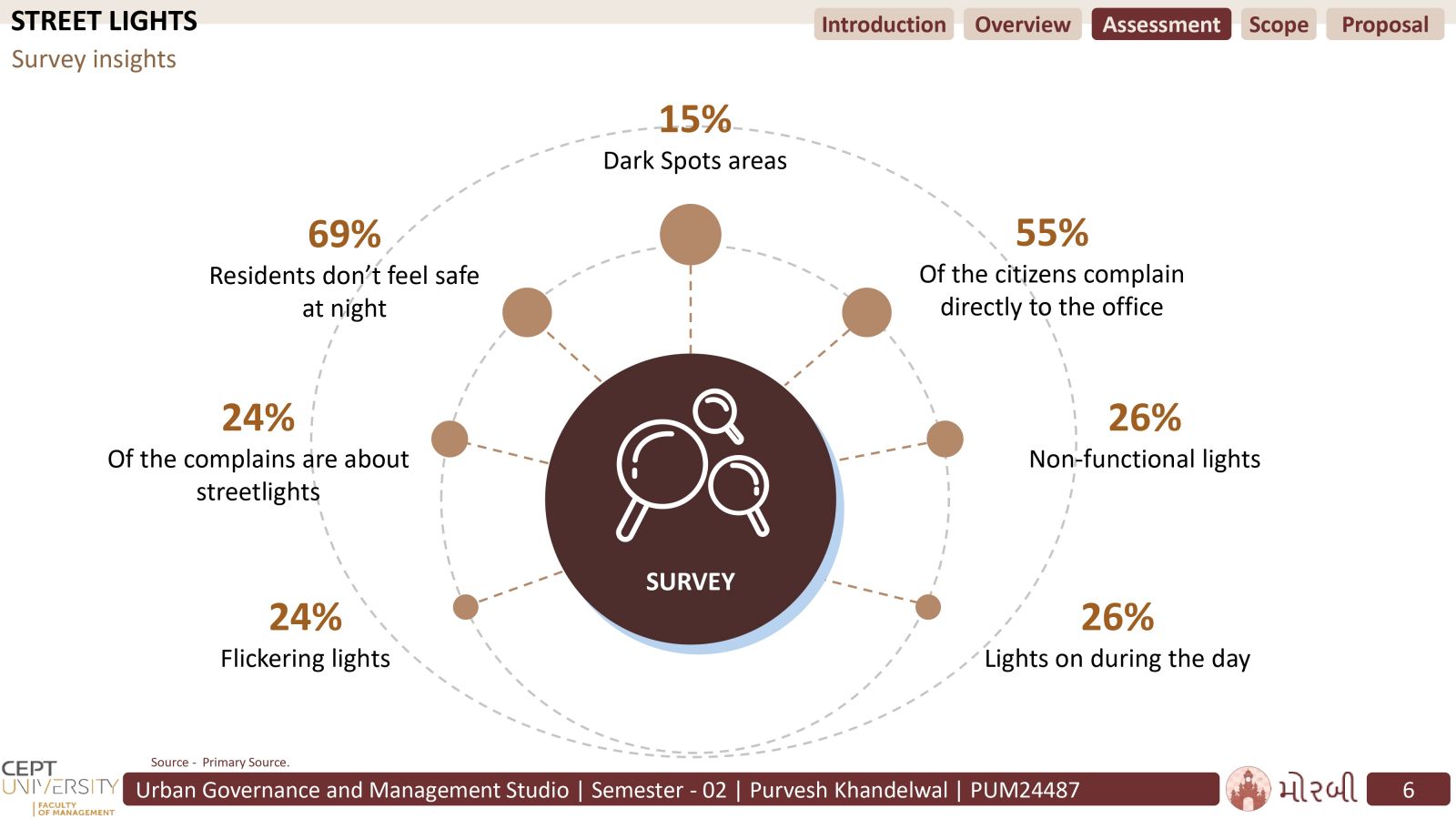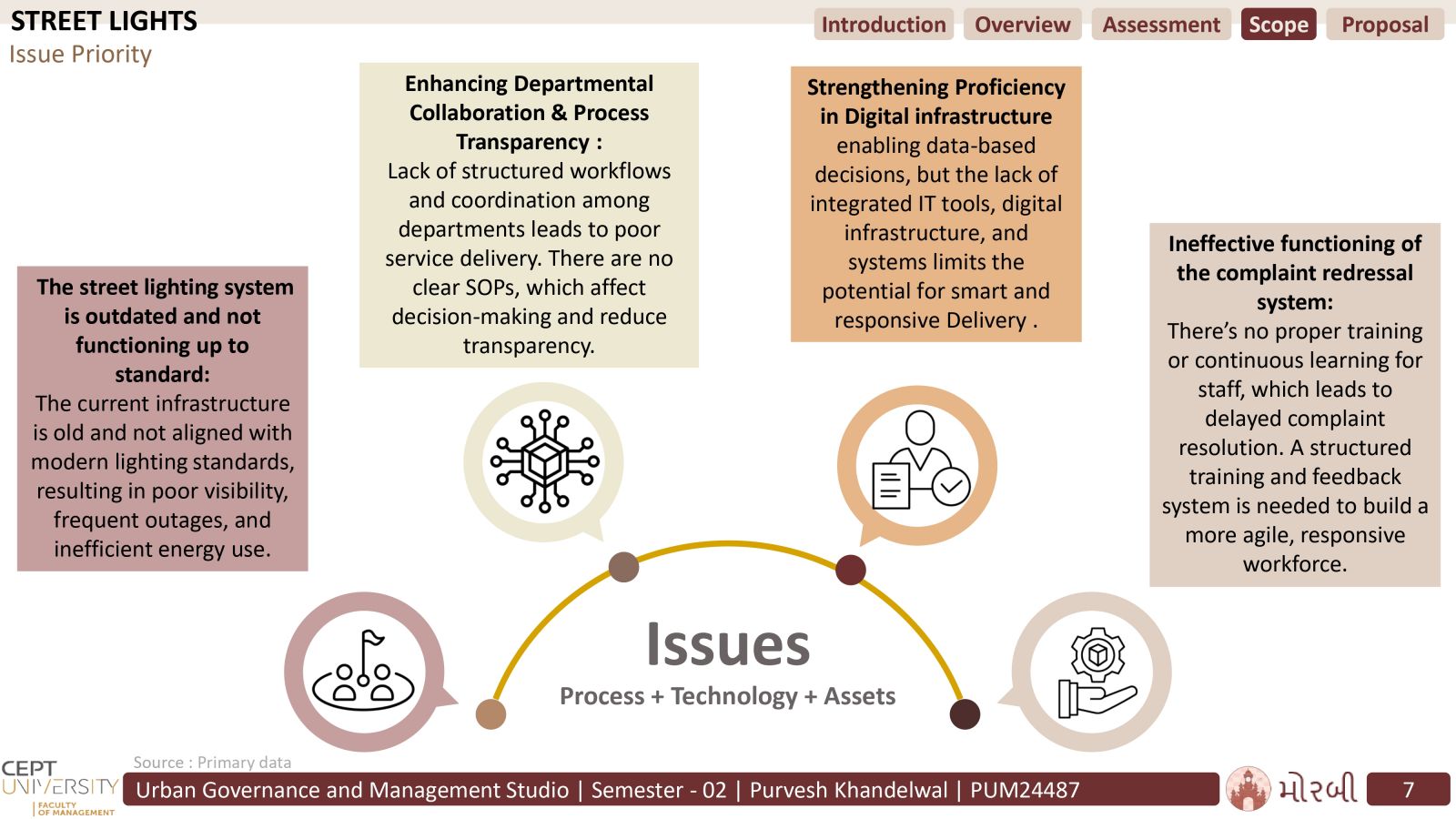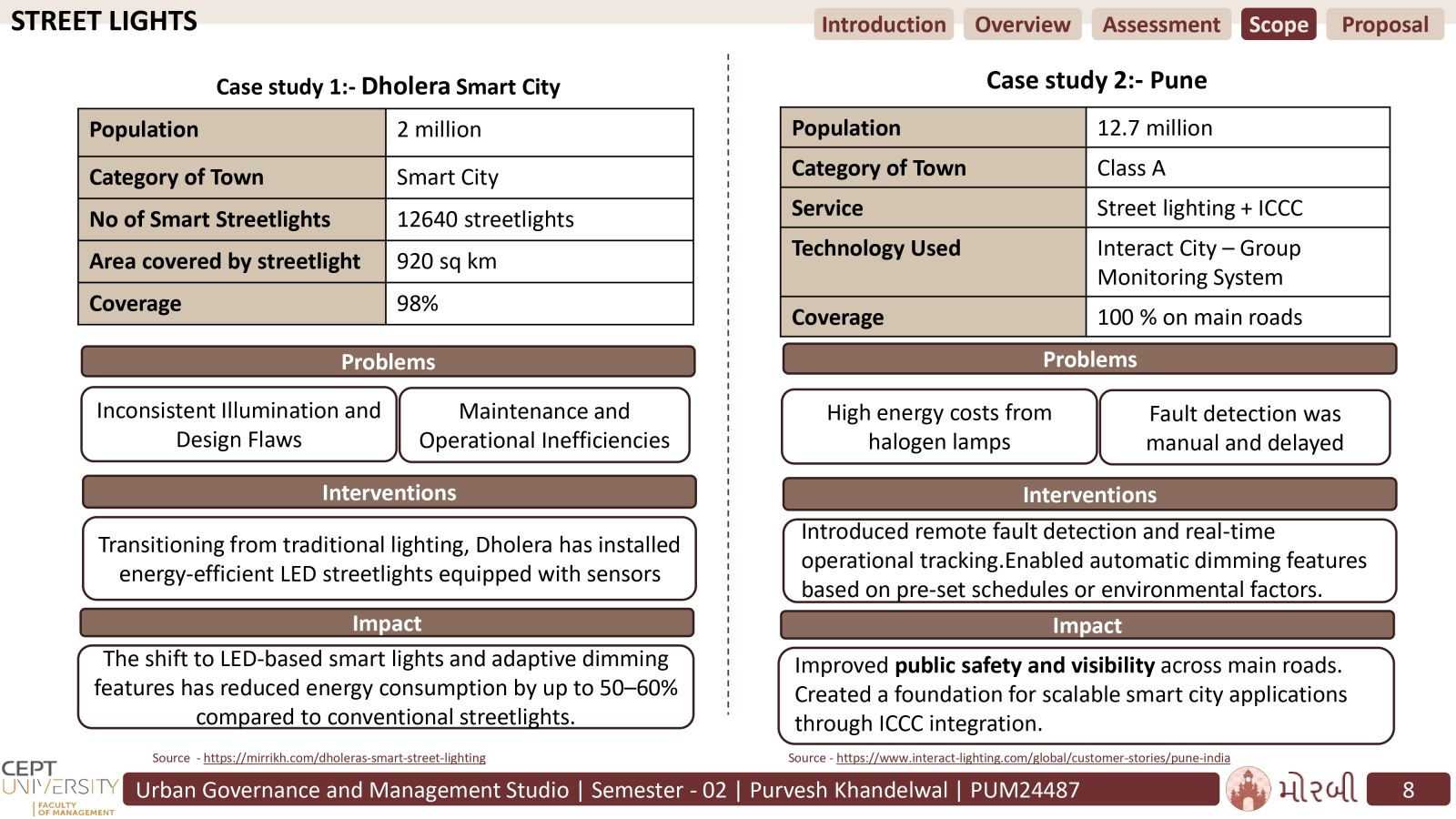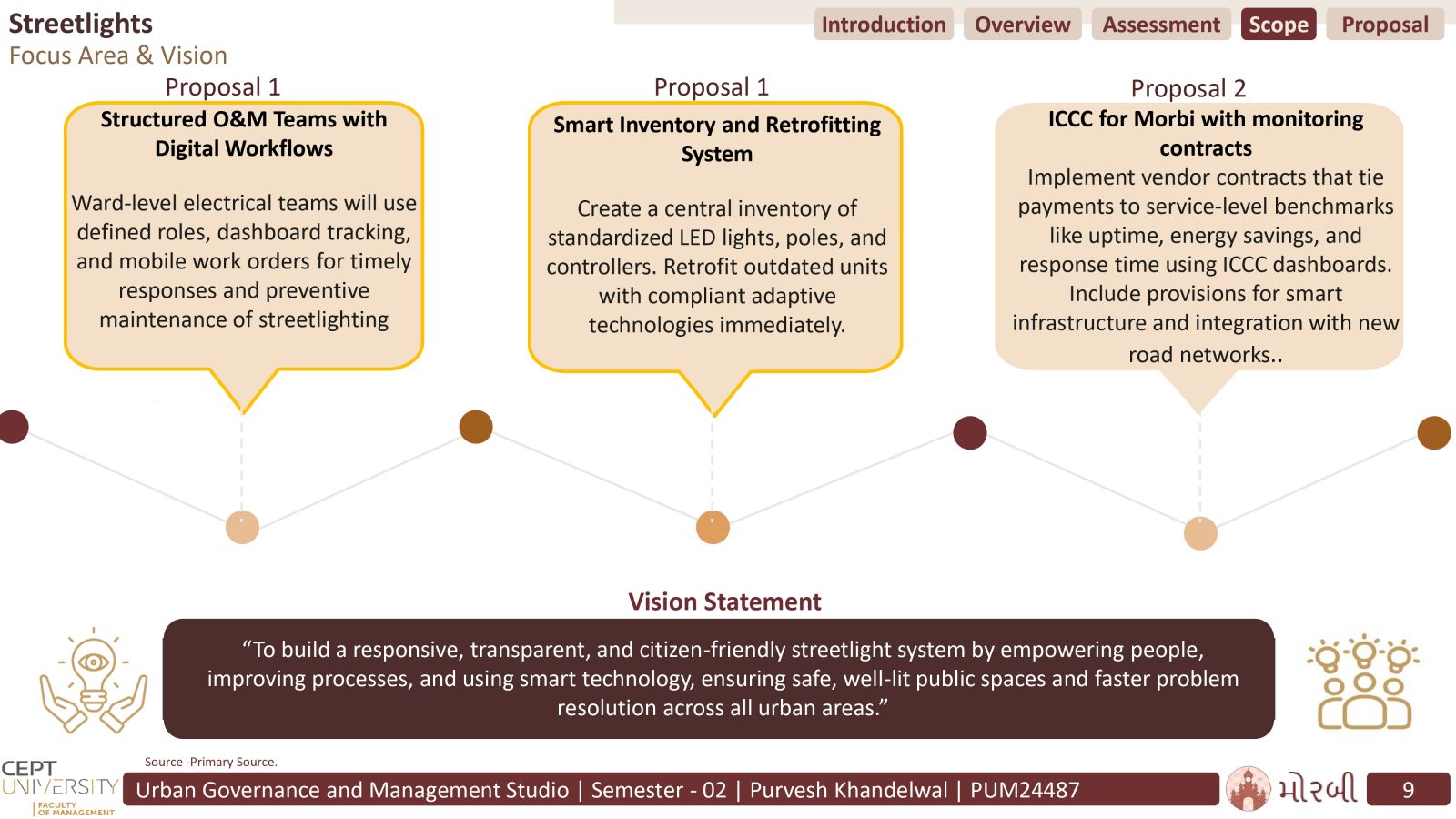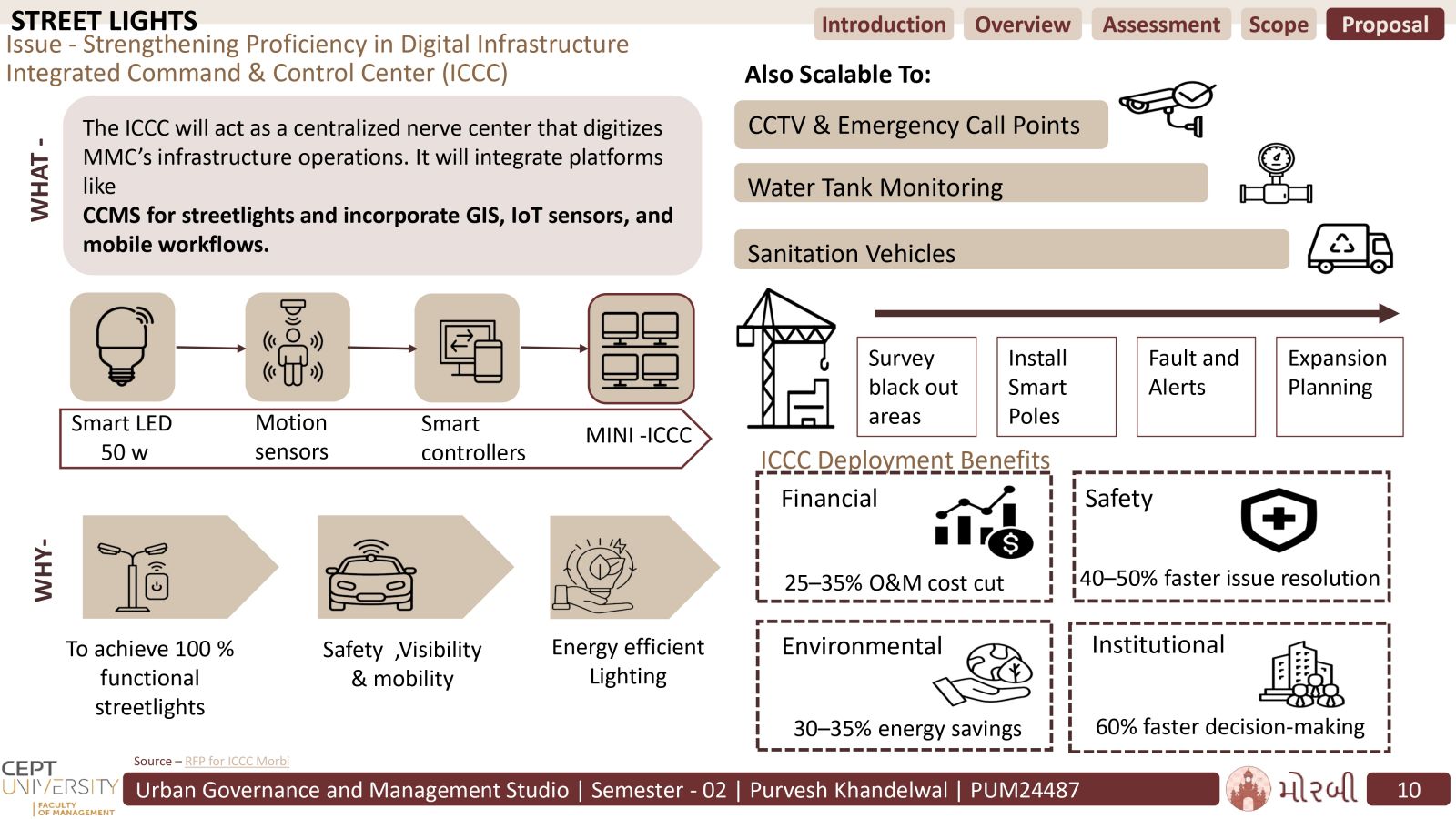Your browser is out-of-date!
For a richer surfing experience on our website, please update your browser. Update my browser now!
For a richer surfing experience on our website, please update your browser. Update my browser now!
This project explores how Morbi can transform its streetlighting system to be more efficient, reliable, and responsive to citizens' needs. With over 25,000 streetlights in place, but many not functioning as intended, the proposal focuses on improving maintenance practices, introducing clear operating procedures, and establishing a Mini-ICCC for better coordination. Drawing inspiration from successful models in Pune and Dholera, the project suggests practical steps that match the city’s current capacity while laying the foundation for smarter systems. The aim is to ensure safer streets, reduce energy waste, and make everyday urban services work better for the people of Morbi.
